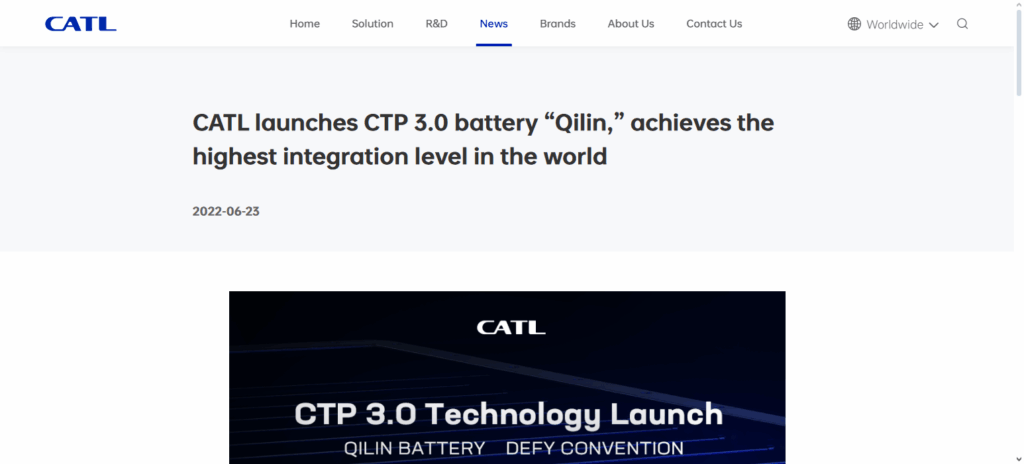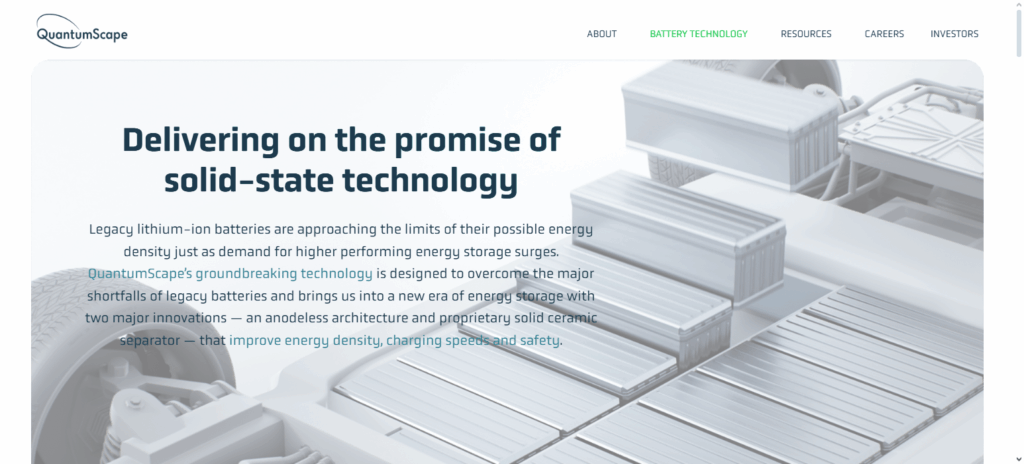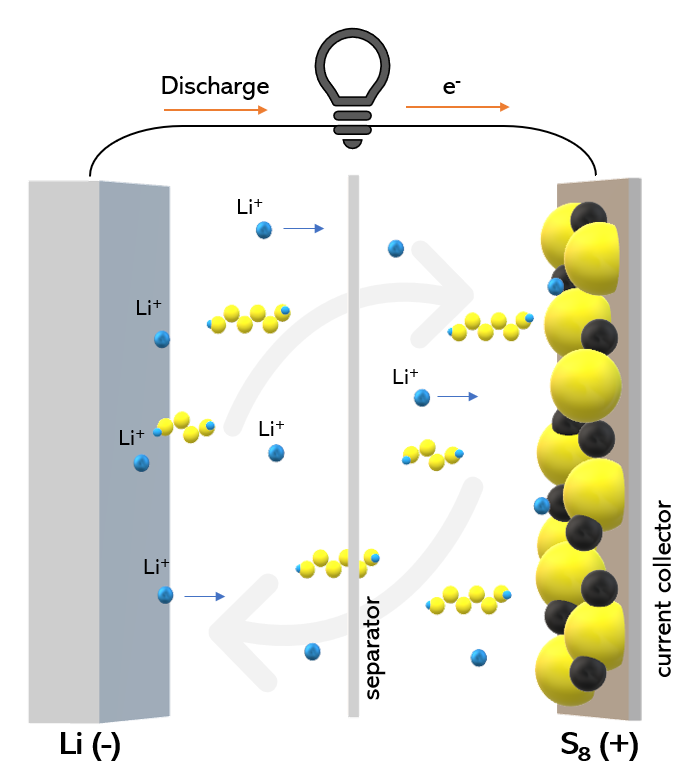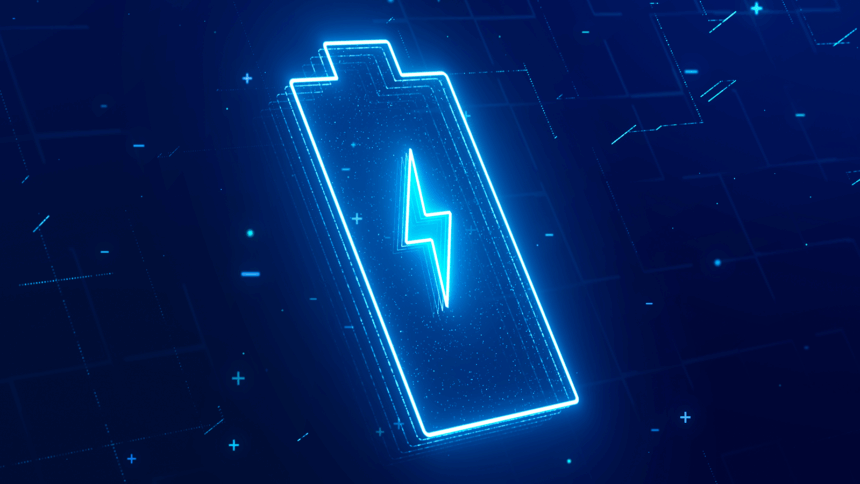In this piece, I will cover the New Battery Technologies to Watch that are revolutionizing how we think about energy storage and its technologies. These include next-gen batteries for electric vehicles, and next-gen batteries for renewable energy.
They promise faster charging, greater energy density, and the best of all, safety and sustainable. It is important to understand these are the next-generation batteries to help with next-level energy needs for the energy focused innovator.
Why Use New Battery Technologies to Watch
Greater Energy Efficiency – New batteries are able to capture and store energies more effectively and are able to discharge them more effectively as well which diminishes wastage and provides devices with improved performance.
Greater Longevity – New battery technologies use more advanced battery chemistries which result in longer-lasting batteries. This leads to reduced additional investment in batteries, decreased costs in replacing batteries, and reduced costs to the environment.
Reduced Charging Times – New technologies result in batteries that are able to be charged more rapidly which improves overall convenience for users.
Reduced Risks – New battery technologies have reduced risks resulting in the decreased potential for overheating, leaking, and fire to occur.
Eco – New batteries promote the use of sustainable practices as many newer batteries are made with eco-friendly materials.
Backing for Cutting Edge Tasks – Innovative batteries are crucial to the support and development of future electronics, storage of renewable energy, and electric vehicles.
Key Point & New Battery Technologies to Watch List
| Battery Technology | Key Points / Advantages |
|---|---|
| CATL Qilin Battery | Ultra-long range, fast charging, high energy density, used in EVs |
| BYD Blade Battery | Safe and stable, long cycle life, resistant to fire, cost-effective |
| Solid‑State Lithium Batteries | Higher energy density, safer (no liquid electrolyte), faster charging potential |
| Graphene Batteries | Extremely fast charging, high conductivity, longer lifespan, lightweight |
| Lithium‑Sulfur Batteries | Very high energy density, lightweight, environmentally friendly, promising for aviation |
| Sodium‑Ion Batteries | Abundant materials, low cost, stable performance in low temperatures |
| Zinc‑Air Batteries | High energy density, safe, environmentally friendly, long shelf life |
| Vanadium Flow Batteries | Scalable for grid storage, long cycle life, easy to maintain |
| Silicon Anode Batteries | Increased capacity, longer lifespan, faster charging |
| Dual‑Carbon Batteries | Fast charging, long cycle life, eco-friendly, high stability |
1. CATL Qilin Battery
Because of its innovative mix of ultra-long range, high energy density, and quick charging characteristics, the CATL Qilin Battery is one of the most exciting new battery technologies to keep an eye on. It has a modular structure that drastically lowers weight while improving economy and safety, and it is mainly intended for electric vehicles.

Its cutting-edge thermal management system keeps it from overheating, guaranteeing steady performance even in the most trying circumstances.
Additionally, the battery may be charged up to 80% in a matter of minutes thanks to fast-charging technology. CATL Qilin is a major participant in the future of sustainable energy storage thanks to these innovative developments, which raise the bar for EV batteries.
CATL Qilin Battery Features
- Ultra-High Energy Density: 255 Wh/kg energy density is extremely beneficial as it allows EV to go for long range drives with just a single charge.
- Fast charging battery: 80% of the battery can be charged in just 10 minutes.
- Improved Safety: Enhanced thermal features to reduce overheating and fire outbreak risks.
2. BYD Blade Battery
The BYD Blade Battery’s remarkable safety, extended longevity, and affordable design make it a noteworthy new battery technology to keep an eye on. Its unique “blade” structure, in contrast to traditional lithium-ion batteries, minimizes the risk of fire or thermal runaway while enabling cells to be placed in a compact, space-efficient manner.

With thousands of charge cycles, it also provides remarkable longevity, which makes it perfect for large-scale energy storage and electric vehicles. Energy density and vehicle space usage are enhanced by the battery’s flat, elongated shape. The BYD Blade Battery is a significant advancement in safe, effective, and sustainable battery technology thanks to these special qualities.
BYD Blade Battery Features
- Long Lifespan: Lasts an estimated 3000 charge cycles which is a huge plus for energy storage and EV.
- Safety-First Design: Nail penetration and thermal fire hazard tests are passed.
- Slim and Space-Efficient: Blade design fits more batteries in a small space improving energy density.
3. Solid‑State Lithium Batteries
Because they provide an affordable and environmentally friendly substitute for lithium-ion batteries, sodium-ion batteries are an emerging battery technology to keep an eye on.

They lessen reliance on limited lithium supplies while preserving dependable energy storage performance by utilizing sodium, a plentiful and accessible metal. These batteries are appropriate for both renewable energy storage and electric vehicles since they function well in low-temperature conditions and have strong cycle stability.
Despite having a somewhat lower energy density than lithium-ion, their scalability, affordability, and eco-friendly materials make them very appealing for large-scale applications. Future green energy solutions are expected to heavily rely on sodium-ion batteries.
Solid-State Lithium Batteries Features
- Solid Electrolyte: Liquid electrolytes are replaced with solid materials, greatly reducing the chances of fire and leakage.
- Higher Energy Density: EV range can double as energy density can achieve 500 Wh/kg.
- Longer Lifespan: Batteries cycles are longer as the chemicals are in a more stable structure.
4. Graphene Batteries
Because they provide superior conductivity, extremely quick charging, and a longer lifespan than traditional batteries, graphene batteries are a cutting-edge battery technology to keep an eye on. These batteries can transmit energy more effectively by incorporating graphene into the anode or cathode, enabling gadgets and electric cars to charge in a fraction of the typical time.

Additionally, they are more robust, heat-resistant, and lightweight, which minimizes performance loss over repeated cycles. Graphene batteries are perfect for high-performance electronics, electric vehicles, and renewable energy storage because they can produce more power without sacrificing safety. Their endurance, speed, and efficiency all represent a significant advancement in energy technology.
Graphene Batteries Features
- Fast Charging: Ultra fast charging is possible as electrons can move in a matter of minutes, making charging take only a couple minutes.
- Higher Conductivity: Batteries work more efficiently and energy loss is minimized as the battery has improved overall conductivity.*
- Temperature Stability: Performs with consistency at temperatures.
5. Lithium‑Sulfur Batteries
Lithium-sulfur batteries are a new type of battery technology that has a higher energy density and are very lightweight. These batteries are better than lithium-ion batteries because sulfur can be used for the parking material and is cheap and environmentally friendly. Being lightweight, sulfur electrodes have a high energy storage capacity, making them optimal for electric vehicles and aerospace.

These batteries have a longer operational life and are much safer than lithium-ion batteries becasue sulfur is much less likely to overheat or catch fire. When you consider the sustainability, efficiency, and energy capacity of lithium-sulfur batteries, you can understand that the technology is greatly advanced and is a major leap in the development of sustainable batteries.
Lithium-Sulfur Batteries Features
- Extremely Lightweight: Lithium batteries overall weight is reduced.
- High Energy Potential: Lithium-ion energy can reach 500-600.
- Eco-Friendly Materials: Cheaper with abundant sulfur.
6. Sodium‑Ion Batteries
Because they provide an affordable and environmentally friendly substitute for lithium-ion batteries, sodium-ion batteries are an emerging battery technology to keep an eye on. They lessen reliance on limited lithium supplies while preserving dependable energy storage performance by utilizing sodium, a plentiful and accessible metal.

These batteries are appropriate for both renewable energy storage and electric vehicles since they function well in low-temperature conditions and have strong cycle stability. Despite having a somewhat lower energy density than lithium-ion, their scalability, affordability, and eco-friendly materials make them very appealing for large-scale applications. Future green energy solutions are expected to heavily rely on sodium-ion batteries.
Sodium-Ion Batteries Features
- Abundant Material: Sodium is cheaper than lithium.
- Stable Performance: Performs reliably in low temperatures.
- Environmentally Friendly: Minimizes impact.
7. Zinc‑Air Batteries
One of the most promising battery technologies are Zinc–Air Batteries. Their innovative design allows for extremely high energy density while being more energy efficient. Instead of expensive heavy materials, Zinc–Air Batteries are powered by oxidizing zinc with air.

This enables the batteries to store energy compactly and light, meaning they can be used in specialized devices that require portability such as medical devices, electric vehicles, and backup power systems.
Additionally, they are non–flammable, safe, and long–lasting when compared to other batteries. Zinc–Air Batteries’s high efficiency, sustainability, and safety all combine to make them the most versatile in energy storage technology. These charateristics are extremely beneficial in the green technology transition and for the future of energy storage.
Zinc-Air Batteries Features
- High Energy Density: Ideal for long duration energy applications.
- Safe and Non-Toxic: Non-toxic and low fire hazard.
- Cost-effective: Zinc is abundant.
8. Vanadium Flow Batteries
Because of their remarkable stability, long lifespan, and scalability, Vanadium Flow Batteries are an innovative battery technology to keep an eye on. They store energy in liquid vanadium electrolytes, unlike ordinary batteries, and by simply enlarging the tanks, they can achieve practically infinite capacity.

They are therefore perfect for big industrial applications, grid-scale energy storage, and the integration of renewable energy sources.
They can be completely discharged without causing harm, have a long cycle life with little deterioration, and are extremely safe because they don’t catch fire. Vanadium Flow Batteries offer a dependable, sustainable, and effective solution for the future of large-scale energy storage systems thanks to these special qualities.
Vanadium Flow Batteries Features
- Long Lifecycle: Lasts over 20 years with capacity degradation.
- Scalable for Grid Storage: Expands systems for renewable energy storage.
- Quick Recharge: Batteries can be recharged.
9. Silicon Anode Batteries
Because of their significantly higher energy capacity and potential for quicker charging, silicon anode batteries are a cutting-edge battery technology to keep an eye on.
These batteries can store a lot more lithium ions by substituting silicon for traditional graphite anodes, increasing overall energy density and enabling gadgets or electric cars to run longer between charges.

When combined with sophisticated structural designs that reduce silicon expansion during charging, they also provide longer cycle lives. Silicon anode batteries are lightweight, effective, and improve performance without sacrificing safety.
They are a significant development in next-generation energy storage due to their special blend of increased capacity, quicker charging, and endurance.
Silicon Anode Batteries Features
- Higher Energy Density: Silicon anodes hold more lithium ions than traditional graphite anodes, enabling greater range.
- Faster Charging: Thanks to more efficient ion mobility, charging occurs more quickly.
- Reduced Degradation: Composite silicon materials mitigate swelling, allowing batteries to last longer.
10. Dual‑Carbon Batteries
Because they use carbon for both the anode and the cathode, dual-carbon batteries are a cutting-edge battery technology that offers a special blend of quick charging, extended cycle life, and environmental friendliness. Because of this design, the batteries are more economical and sustainable because they rely less on rare elements like cobalt or lithium.

Dual‑Carbon Batteries deliver great stability and efficiency, performing well under high power demands while ensuring safety and thermal resistance. They are perfect for renewable energy storage, portable gadgets, and electric cars since they can charge quickly without significantly losing capacity. These characteristics make Dual-Carbon Batteries a viable option for energy systems of the future.
Dual-Carbon Batteries Features
- Graphite Electrodes: Both anode and cathode are carbon, easing the burden of metals such as lithium or cobalt.
- Fast Charging and Discharging: Provides the high power output needed for many EVs and a variety of electronic devices.
- Environmentally Friendly: Less toxic than lithium-ion batteries, making them easier to recycle.
Conclusion
In summary, the field of energy storage continues to advance owing to developments in varying battery technologies. Innovations, such as CATL Qilin, BYD Blade, solid-state lithium, graphene, lithium-sulfur, sodium-ion, zinc-air, vanadium flow, silicon anode, and dual-carbon batteries, are revolutionizing energy storage and usage.
While still reflecting the good and bad aspects of the batteries we are used to today, these technologies will replace old batteries. With electric vehicles, renewable energy systems and portable electronics becoming even more mainstream, the next in line batteries will fuel a safer and more efficient world, transforming the batteries limitations, to provide longer life cycles, safe sustainable materials and renewable recourses to society.
FAQ
What are the most promising new battery technologies?
Some of the most promising technologies include CATL Qilin, BYD Blade, solid-state lithium, graphene, lithium-sulfur, sodium-ion, zinc-air, vanadium flow, silicon anode, and dual-carbon batteries.
Why are these new batteries important?
They offer higher energy density, faster charging, longer lifespan, improved safety, and more sustainable materials compared to traditional batteries.
Which industries benefit most from these technologies?
Electric vehicles, renewable energy storage, portable electronics, aerospace, and large-scale grid storage benefit significantly.








